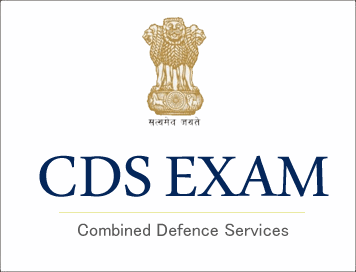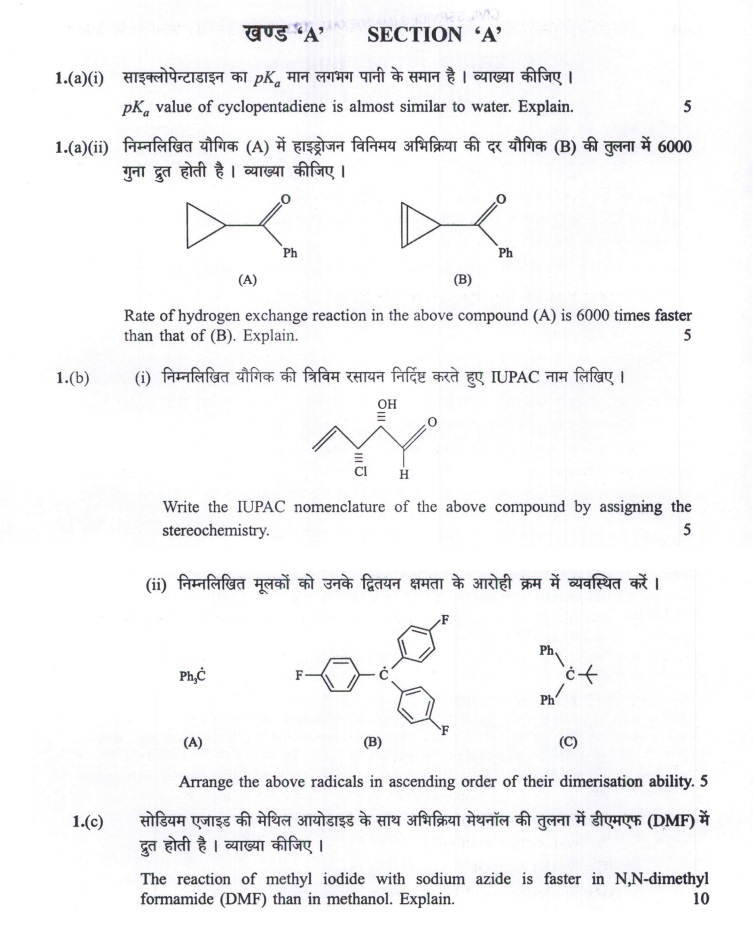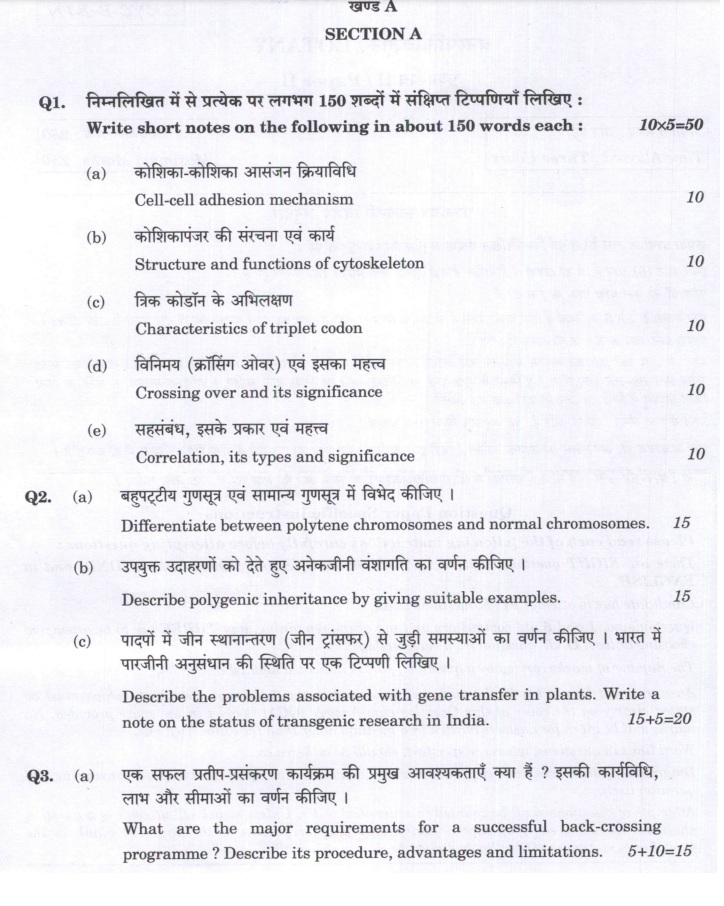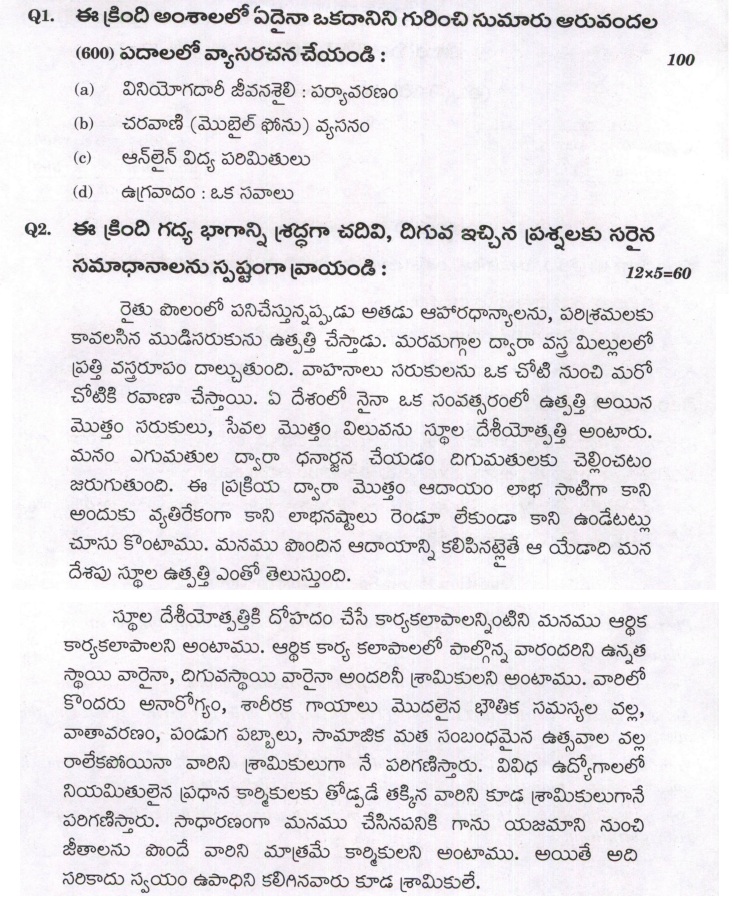
(Final Result) UPSC Combined Defence Services Examination (I), 2023
The following are the lists, in order of merit of 235 (156 + 57 + 22 ) candidates who have qualified on the basis of the results of the Combined Defence Services Examination (I), 2023 conducted by the Union Public Service Commission in April, 2023 and SSB interviews held by the Services Selection Board of the Ministry of Defence for admission to the 156th (DE) Course of Indian Military Academy, Dehradun; Indian Naval Academy, Ezhimala, Kerala and Air Force Academy, Hyderabad (Pre-Flying) Training Course i.e. No. 215 F(P) Course.
2. There are some common candidates in the three lists for various courses.
3. The number of vacancies, as intimated by the Government is 100 for Indian Military Academy [including 13 vacancies reserved for NCC ‘C’ Certificates (Army Wing) holders], 22 for Indian Naval Academy, Ezhimala, Kerala Executive Branch (General Service)/Hydro[including 06 vacancies for NCC ‘C’ Certificate (Naval Wing through NCC Special Entry) holders] and 32 for Air Force Academy, Hyderabad [03 vacancies are reserved for NCC ’C’ Certificate (Air Wing) holders through NCC Spl. Entry].
4. The Commission had recommended 2696, 843 and 629 as qualified in the written test for admission to the Indian Military Academy, Indian Naval Academy and Air Force Academy, respectively. The number of candidates finally qualified is those after SSB test conducted by Army Head Quarters.
5. The results of Medical examination have not been taken into account in preparing these lists.
6. Verification of date of birth and educational qualifications of these candidates is still under process by the Army Headquarters. The candidature of all these candidates is, therefore, Provisional on this score. Candidates are requested to forward their certificates, in original, in support of Date of Birth/Educational qualification etc. claimed by them, along with Photostat attested copies thereof to Army Headquarters /Naval Headquarters /Air Headquarters, as per their first choice.
7. In case, there is any change of address, the candidates are advised to promptly intimate directly to the Army Headquarters /Naval Headquarters /Air Headquarters.
INDIAN MILITARY ACADEMY
|
S.NO.
1
|
ROLL NO
0809099
|
NAME
ARPIT AGGARWAL
|
|
2
|
1105699
|
AMAN SOMRA
|
|
3
|
0803512
|
RAHUL SINGH TANWAR
|
|
4
|
0809639
|
TUSHAR
|
|
5
|
3504987
|
INDERPREET SINGH
|
|
6
|
5901999
|
LOKESH SINGH BHINDWAR
|
|
7
|
5400782
|
VIMAL PANDEY
|
|
8
|
2603342
|
GAURAV UPADHYAY
|
|
9
|
0809199
|
GAGAN DEEP BHARTI
|
|
10
|
1101873
|
VIKRANT SINGH SHEKHAWAT
|
|
11
|
0802815
|
GAURAV SINGH
|
|
12
|
0805001
|
DHANESH YADAV
|
|
13
|
1105451
|
AJAY SINGH RAJPUT
|
|
14
|
6602057
|
KARTIK SHARMA
|
|
15
|
1101443
|
BHUPENDER SINGH
|
|
16
|
1401043
|
ABHISHEK KIRSALI
|
|
17
|
1401929
|
DEESHANK SINGH
|
|
18
|
8900196
|
SHUBHAM THAKUR
|
|
19
|
8500290
|
NIKHIL KAPRI
|
|
20
|
6900373
|
KUNAL DANGROLIYA
|
|
21
|
8500351
|
ABHINAV PANDEY
|
|
22
|
0203889
|
VIPUL SAGAR
|
|
23
|
5100189
|
RITIK PANDEY
|
|
24
|
6301279
|
AROHI BALODA
|
|
25
|
2604655
|
SHIVAM PANDEY
|
|
26
|
2600806
|
AYUSH PRIYADARSHI VERMA
|
|
27
|
1403082
|
SHIVAM SHARMA
|
|
28
|
3500652
|
AMOGH SINGH PATHANIA
|
|
29
|
0802412
|
SUNIL RAJEBHAU MUNDE
|
|
30
|
4100962
|
VIKASH KUMAR YADAV
|
|
31
|
1103844
|
CHETAN BHAL
|
|
32
|
0802750
|
RAUNAK BHOWMIK
|
|
33
|
1401887
|
PRASANNA OJHA
|
|
34
|
0810440
|
PRANAV KALA
|
|
35
|
0601607
|
GAURAV SINHA MAHAPATRA
|
|
36
|
3501189
|
ADARSH DABAS
|
|
37
|
0807659
|
DEEPAK YADAV
|
|
38
|
1402966
|
DIGVIJAY DHAYAL
|
|
39
|
0500842
|
RANJAN KUMAR
|
|
40
|
0801351
|
PRIKSHIT DAHIYA
|
|
41
|
6700177
|
VARUN LALJI PANDEY
|
|
42
|
3502697
|
AKSHAY SALARIA
|
|
43
|
3505145
|
AALOK BHANOT
|
|
44
|
1404245
|
ABHIRATH TIWARI
|
|
45
|
6600157
|
ABHAY SINGH
|
|
46
|
2602039
|
YASH RAMAN
|
|
47
|
1401687
|
SWARNIM SINGH
|
|
48
|
8900165
|
UDIT PALSRA
|
|
49
|
0806526
|
MAYANK KUMAR TRIPATHI
|
|
50
|
6600087
|
AMIT KUMAR YADAV
|
|
51
|
6101888
|
JAI KUMAR CHAUHAN
|
|
52
|
5200382
|
ASAD HASAN
|
|
53
|
0101155
|
HARSH PRATAP SINGH
|
|
54
|
1503354
|
PRANAV PRASHANT
|
|
55
|
3500629
|
SHRESTH
|
|
56
|
4900517
|
YASH JAISWAL
|
|
57
|
0801412
|
SAHIL DALAL
|
|
58
|
0600214
|
SURAJ KUMAR SAHOO
|
|
59
|
0805242
|
RITIK KUMAR SINGH
|
|
60
|
0100589
|
LOTWALA OM MANISHKUMAR
|
|
61
|
7100645
|
GOURAV KUMAR
|
|
62
|
0801523
|
HARSH SINGH
|
|
63
|
0500289
|
SHERKAR SAMEEP SUNIL
|
|
64
|
6800536
|
PRADUMN GUPTA
|
|
65
|
0812041
|
VIPUL KUMAR
|
|
66
|
1401197
|
SHASHANK MALL
|
|
67
|
0301900
|
SWASTIK SOVAN GIRI
|
|
68
|
1200425
|
B ADITYA
|
|
69
|
1503511
|
AYUSH RAJ
|
|
70
|
0301929
|
GOKUL GIRISH
|
|
71
|
6601658
|
PRAVEEN SANGLE
|
|
72
|
3500101
|
AMAN SHARMA
|
|
73
|
1403299
|
SOURABH BISHT
|
|
74
|
6602628
|
OMKAR NANASAHEB JADHAV
|
|
75
|
6601033
|
SHREENIKET PRAVINKUMAR FATANGAR
|
|
76
|
0807010
|
ABHISHEK SINGH
|
|
77
|
8800170
|
SHIVAM BHATIA
|
|
78
|
8800385
|
SAHIL
|
|
79
|
1403767
|
PRADEEP SINGH PANWAR
|
|
80
|
0800729
|
YASH GUPTA
|
|
81
|
0805477
|
VIVEK SINGH
|
|
82
|
6700412
|
WATHORE SIDDHANT SUBHASH
|
|
83
|
0809919
|
LALIT LOHAN
|
|
84
|
6600369
|
AAYUSH AMAR KUHITE
|
|
85
|
0801072
|
VIKRANT MALIK
|
|
86
|
0804594
|
AMANDEEP SINGH
|
|
87
|
2200340
|
ABHISHEK PATEL
|
|
88
|
3503576
|
SOURAV
|
|
89
|
0802610
|
ABHYUDAYA CHHABRA
|
|
90
|
1101344
|
LAKSHAY SINGH
|
|
91
|
0401396
|
KRISHAN KANT SHARMA
|
|
92
|
0804915
|
PRIYANSHU
|
|
93
|
3800374
|
MORE BHUSHAN PRAKASH
|
|
94
|
7200025
|
GOHEL SAVAN PRAVIN
|
|
95
|
0501682
|
RAJ JITESHKUMAR RATHOD
|
|
96
|
5901006
|
SONAWANE CHARUDATTA
|
|
97
|
1103258
|
ABDUL MAJID
|
|
98
|
7800117
|
SHOBHIT SHARMA
|
|
99
|
3400881
|
DASHMESH SINGH
|
|
100
|
0301957
|
AYUSH SHETTY KANNOOR
|
|
101
|
0800178
|
AVINISH SINGH
|
|
102
|
8800418
|
VIKAS GULERIA
|
|
103
|
0804330
|
VATSAL AGARWAL
|
|
104
|
6800500
|
AAYUSH SINGH CHAUHAN
|
|
105
|
0808616
|
NEEL MATHUR
|
|
106
|
8800411
|
DINKAR DAVESAR
|
|
107
|
0201825
|
PRIYANSHU PANDEY
|
|
108
|
1404338
|
ADITYA KUMAR
|
|
109
|
2600875
|
DEVANSH DEV
|
|
110
|
1700588
|
SOURAV SHARMA
|
|
111
|
0812449
|
SOURAV SINGH YADAV
|
|
112
|
6601705
|
ALOK JHAJHRIA
|
|
113
|
0805775
|
PRINCE RANA
|
|
114
|
2200464
|
HEMANT SHARMA
|
|
115
|
0810915
|
TRAYAKSH BHARDWAJ
|
|
116
|
6603549
|
BHANGRE HRUSHIKESH SUNIL
|
|
117
|
1001376
|
V SAI SANKALP
|
|
118
|
5901106
|
ABHIYANSHU TYAGI
|
|
119
|
3400682
|
RANDEEP SINGH
|
|
120
|
0803894
|
PRADEEP SONI
|
|
121
|
0802414
|
GARVIT GROVER
|
|
122
|
0808041
|
ANSH RANA
|
|
123
|
0804357
|
ASHUTOSH YADAV
|
|
124
|
3700028
|
SURAJ PRAKASH PANDEY
|
|
125
|
6600111
|
SHUVENDU MAITY
|
|
126
|
0800147
|
NITIN AHLAWAT
|
|
127
|
7300007
|
PRAJWAL M
|
|
128
|
3502386
|
HARMANDEEP SINGH
|
|
129
|
0300407
|
KEERTHI RAJ S
|
|
130
|
5901802
|
KARAN SHARMA
|
|
131
|
1105921
|
GUMANSHU ANGNANI
|
|
132
|
6901163
|
HANSRAJ SINGH TOMAR
|
|
133
|
0811044
|
JATIN SINGH DHAMI
|
|
134
|
7000150
|
AAKASH MAHENDRU
|
|
135
|
5800470
|
RUDRAKSH WHIG
|
|
136
|
1101320
|
UDIT KAJLA
|
|
137
|
0806212
|
ROBIN SINGH
|
|
138
|
0500012
|
ABHAY TIWARI
|
|
139
|
0811666
|
AMAN BHARDWAJ
|
|
140
|
6600552
|
M DEEPAK KUMAR
|
|
141
|
8500393
|
AWAS BORA
|
|
142
|
0812179
|
PAWAN KUMAR
|
|
143
|
3400932
|
ARUN PARIHAR
|
|
144
|
1404120
|
MAYANK SINGH
|
|
145
|
8500132
|
HIMANSHU JOSHI
|
|
146
|
7100137
|
BHAWESH RAMCHANDANI
|
|
147
|
1104496
|
RESHAM SINGH RATHORE
|
|
148
|
0100783
|
SURVE SAIRAJ PRAKASH
|
|
149
|
0803817
|
ANKIT CHAHAL
|
|
150
|
8500543
|
PAWAN BHATT
|
|
151
|
1400282
|
AYUSH KANYAL
|
|
152
|
2605333
|
KARAN
|
|
153
|
8500371
|
BIRENDRA SINGH RAUTELA
|
|
154
|
8800022
|
ARYAMAAN SINGH RAWAT
|
|
155
|
0202338
|
MOHD UMAR FARUKH KHAN
|
|
156
|
0501744
|
RIGVED VIKRANT KULKARNI
|
INDIAN NAVAL ACADEMY :
|
S.NO.
1
|
ROLL NO
5400782
|
NAME
VIMAL PANDEY
|
|
2
|
6602057
|
KARTIK SHARMA
|
|
3
|
8900196
|
SHUBHAM THAKUR
|
|
4
|
6301279
|
AROHI BALODA
|
|
5
|
3500652
|
AMOGH SINGH PATHANIA
|
|
6
|
1103844
|
CHETAN BHAL
|
|
7
|
0801351
|
PRIKSHIT DAHIYA
|
|
8
|
6700177
|
VARUN LALJI PANDEY
|
|
9
|
3505145
|
AALOK BHANOT
|
|
10
|
0806526
|
MAYANK KUMAR TRIPATHI
|
|
11
|
4900517
|
YASH JAISWAL
|
|
12
|
0600214
|
SURAJ KUMAR SAHOO
|
|
13
|
0100589
|
LOTWALA OM MANISHKUMAR
|
|
14
|
0500289
|
SHERKAR SAMEEP SUNIL
|
|
15
|
0301900
|
SWASTIK SOVAN GIRI
|
|
16
|
1200425
|
B ADITYA
|
|
17
|
0301929
|
GOKUL GIRISH
|
|
18
|
6601658
|
PRAVEEN SANGLE
|
|
19
|
6601033
|
SHREENIKET PRAVINKUMAR FATANGAR
|
|
20
|
8800170
|
SHIVAM BHATIA
|
|
21
|
6700412
|
WATHORE SIDDHANT SUBHASH
|
|
22
|
6600369
|
AAYUSH AMAR KUHITE
|
|
23
|
1101344
|
LAKSHAY SINGH
|
|
24
|
0401396
|
KRISHAN KANT SHARMA
|
|
25
|
3800374
|
MORE BHUSHAN PRAKASH
|
|
26
|
7200025
|
GOHEL SAVAN PRAVIN
|
|
27
|
0501682
|
RAJ JITESHKUMAR RATHOD
|
|
28
|
6600228
|
SANVATSARKAR PRAGALBH GITESH
|
|
29
|
5901006
|
SONAWANE CHARUDATTA
|
|
30
|
1103258
|
ABDUL MAJID
|
|
31
|
3400881
|
DASHMESH SINGH
|
|
32
|
0301957
|
AYUSH SHETTY KANNOOR
|
|
33
|
1700588
|
SOURAV SHARMA
|
|
34
|
6601705
|
ALOK JHAJHRIA
|
|
35
|
2200464
|
HEMANT SHARMA
|
|
36
|
1001376
|
V SAI SANKALP
|
|
37
|
5901106
|
ABHIYANSHU TYAGI
|
|
38
|
3700028
|
SURAJ PRAKASH PANDEY
|
|
39
|
6600111
|
SHUVENDU MAITY
|
|
40
|
0300407
|
KEERTHI RAJ S
|
|
41
|
5901802
|
KARAN SHARMA
|
|
42
|
6901163
|
HANSRAJ SINGH TOMAR
|
|
43
|
6600552
|
M DEEPAK KUMAR
|
|
44
|
0100783
|
SURVE SAIRAJ PRAKASH
|
|
45
|
1400282
|
AYUSH KANYAL
|
|
46
|
6601633
|
KALEKAR SHUBHANKAR SWARUP
|
|
47
|
5800369
|
AMIT DHASMANA
|
|
48
|
7800718
|
SRAJAN JAIN
|
|
49
|
0501744
|
RIGVED VIKRANT KULKARNI
|
|
50
|
7800942
|
PRATYAKSH PETARE
|
|
51
|
1000420
|
DEV SHANKAR TRIPATHI
|
|
52
|
0500931
|
AYUSH TIWARI
|
|
53
|
2200571
|
HARSH KUMAR VARSHNEY
|
|
54
|
0401460
|
CHINMAY JOSHI
|
|
55
|
6603264
|
ADITYA SINGH
|
|
56
|
0300786
|
APURVA PARASAR
|
|
57
|
0300487
|
AYUSH TOMAR
|
AIR FORCE ACADEMY :
|
S.NO.
1
|
ROLL NO
1105451
|
NAME
AJAY SINGH RAJPUT
|
|
2
|
8500290
|
NIKHIL KAPRI
|
|
3
|
6301279
|
AROHI BALODA
|
|
4
|
3500652
|
AMOGH SINGH PATHANIA
|
|
5
|
6700177
|
VARUN LALJI PANDEY
|
|
6
|
3505145
|
AALOK BHANOT
|
|
7
|
0806526
|
MAYANK KUMAR TRIPATHI
|
|
8
|
1200425
|
B ADITYA
|
|
9
|
1503511
|
AYUSH RAJ
|
|
10
|
0301929
|
GOKUL GIRISH
|
|
11
|
1403299
|
SOURABH BISHT
|
|
12
|
6601033
|
SHREENIKET PRAVINKUMAR FATANGAR
|
|
13
|
8800385
|
SAHIL
|
|
14
|
0809919
|
LALIT LOHAN
|
|
15
|
2200340
|
ABHISHEK PATEL
|
|
16
|
1101344
|
LAKSHAY SINGH
|
|
17
|
0804915
|
PRIYANSHU
|
|
18
|
0501682
|
RAJ JITESHKUMAR RATHOD
|
|
19
|
1103258
|
ABDUL MAJID
|
|
20
|
0301957
|
AYUSH SHETTY KANNOOR
|
|
21
|
8800418
|
VIKAS GULERIA
|
|
22
|
0800147
|
NITIN AHLAWAT
|
QUICK LINKS
Courtesy: UPSC


















